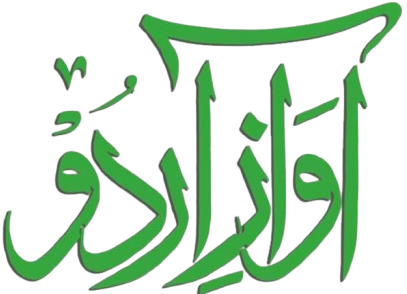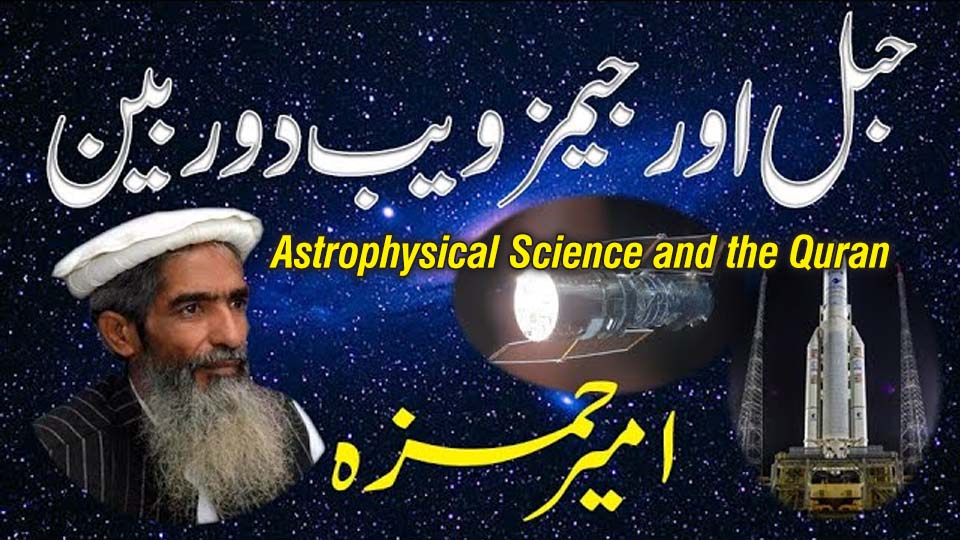Astrophysical science and the Quran have long appeared to exist in separate realms—one rooted in empirical observation, the other in divine revelation. However, a closer look reveals remarkable intersections between the two, especially when we explore the structure and expansion of the universe. In a compelling two-part column published in Daily Dunya (31 December 2021 and 7 January 2022), renowned Pakistani columnist Ameer Hamza delved deep into this harmony between classical Islamic scholarship and cutting-edge space science.
Imam Qurtubi and the Interwoven Sky
A key theme in Ameer Hamza’s column revolves around Imam Muhammad ibn Ahmad al-Qurtubi, a revered 13th-century Islamic scholar, whose exegesis of the Quran—Tafsir al-Qurtubi—discussed the verse “By the sky with its woven strands” (Quran 51:7). Imam Qurtubi cited earlier Islamic authorities like Ibn Abbas, Mujahid, and Qatadah, interpreting the heavens as being structured like intricately woven fabric.
The Quranic term “al-hubuk” is likened to cloth woven with threads, exhibiting beauty, order, and strength. Remarkably, this interpretation mirrors the contemporary scientific description of the universe as a “cosmic fabric”—a concept foundational to astrophysical science. Concepts like space-time, gravitational waves, and the expansion of galaxies echo these ancient insights.
Ibn Kathir and the Woven Cosmos
Another classical scholar referenced by Ameer Hamza is Ibn Kathir, who, writing over 650 years ago, interpreted the same verse with the phrase: “And the sky is woven.” This ancient understanding has now been affirmed by modern instruments like the Hubble Space Telescope and the James Webb Space Telescope, which provide data supporting the idea of an expanding, interconnected cosmos.
Astrophysical science and the Quran find a remarkable common ground here. The language may differ—fabric in scientific terms versus woven sky in Quranic terminology—but the essence remains strikingly similar.
NASA, James Webb, and the Legacy of Space Fabric
The James Webb Space Telescope (JWST), launched on 25 December 2021, is often called a “time machine” due to its ability to peer 13 billion years into the past. It is designed to detect the faintest signs of early galaxies and stars. Its journey to the Lagrange Point 2 (L2)—a gravitationally stable spot 1.5 million kilometres from Earth—symbolises the extraordinary coordination and balance embedded in the universe.
This balance, or cosmic justice, is also referenced in the Quran. In Surah Rahman, verses speak of divine balance (mizan) and warn humanity not to transgress it. It’s a profound link between astrophysical science and the Quran: one reveals how galaxies stay aligned; the other, how societies should.
The Quran, Not Just Metaphor
Critics often claim that Islamic scholars try to retrofit religious texts to match new scientific findings. But Ameer Hamza’s column challenges this view. He argues that the Quran and its early commentators already laid down foundational ideas that modern astrophysical science is only now catching up with. Scholars like Stephen Hawking and Sean Carroll speak of the universe as a fabric woven with unseen threads—a description incredibly close to that of early tafsir.
Even NASA scientists cautiously refer to “cosmic building,” admitting the structured nature of the universe. Yet, the terminology—space, void, vacuum—still lacks the poetic accuracy of “woven sky,” as revealed in the Quran.
Why This Matters Today
Ameer Hamza concludes with a powerful moral insight. In a justly governed universe, justice must also prevail on Earth. He recalls the historic integrity of Abdullah ibn Rawaha, a companion of the Prophet ﷺ, whose unwavering fairness impressed even adversaries. The moral is clear: while we marvel at astrophysical wonders, we must also reflect on justice, honesty, and accountability in our societies.
In this context, astrophysical science and the Quran are not opposing domains. They converge on fabric, on balance, and ultimately, on truth. One shows us how the stars align; the other, how human lives should.
Final Reflection
When astrophysical science and the Quran are studied together, they reveal not contradiction but coherence—two lenses revealing the same majestic universe. From Imam Qurtubi’s tafsir to James Webb’s sensors, the message is unified: the cosmos is woven, deliberate, and meaningful.
You can read both parts of the original Urdu columns here
If you’d like to listen to any Urdu Column in audio format, click the CONTACT button below to get in touch with the AwazeUrdu team to order the audiobook.
You can also watch the same video on these social media platforms.
Let us then look beyond the telescope, and deeper into the verses—both of nature, and scripture.
انسان صدیوں سے آسمان کی وسعتوں اور کائنات کے رازوں کو جاننے کی کوشش کرتا رہا ہے۔ فلکیات کی دنیا میں جدید ترین تحقیقات اور مشاہدات نے حیران کُن انکشافات کیے، جن میں سے کئی ایسے ہیں جن کی بنیادیں قرآنِ کریم کی آیات اور اسلامی تفاسیر میں صدیوں پہلے رکھی جاچکی تھیں۔
اسی موضوع پر معروف دانشور جناب امیر حمزہ نے ایک بصیرت افروز کالم تحریر کیا، جو دو اقساط میں روزنامہ دنیا میں 31 دسمبر 2021ء اور 07 جنوری 2022ء کو شائع ہوا۔ ان کا یہ کالم سائنسی دریافتوں اور قرآنی بیانات کے باہم تعلق کو نہایت مدلل انداز میں پیش کرتا ہے۔
کالم کے آغاز میں جناب امیر حمزہ، مشہور امریکی فلکیات دان ایڈون حبل کا ذکر کرتے ہیں، جنہوں نے 1920ء کی دہائی میں پہلی بار مشاہدہ کیا کہ ہماری کہکشاں “ملکی وے” کے علاوہ بھی بہت سی کہکشائیں (Galaxies) موجود ہیں، اور وہ مسلسل ایک دوسرے سے دور جارہی ہیں۔ اس مشاہدے سے یہ نظریہ قائم ہوا کہ کائنات پھیل رہی ہے۔
حبل کی یاد میں، ناسا نے 1990ء میں “حبل اسپیس ٹیلی اسکوپ” خلا میں بھیجی۔ اس دوربین کی مدد سے حاصل شدہ تصاویر نے سائنس کی دنیا میں انقلاب برپا کر دیا۔ اس کے بعد بھی ناسا نے چندرا، سپائزر اور کومپٹن نامی دوربینیں خلا میں روانہ کیں، جن سب نے کائنات کے پھیلنے کی تصدیق کی۔
مشہور سائنس دان آئن سٹائن نے نظریہ دیا تھا کہ کائنات کا “اسٹرکچر” ایک “فیبرک” یعنی جالی دار کپڑے کی مانند ہے، جس میں تمام اجرام فلکی بنے ہوئے ہیں۔ اس نظریے کی تصدیق اسٹیفن ہاکنگ اور شان کیرول (Sean Carroll) جیسے نظریاتی سائنس دانوں نے بھی کی۔ چنانچہ شان کیرول لکھتے ہیں:
“Space-time can be thought of as a fabric in which the objects of the universe are embedded.”
یہیں جناب امیر حمزہ اپنے کالم میں قاری کو ایک حیران کن علمی نکتہ سے روشناس کراتے ہیں کہ امام محمد بن احمد القرطبیؒ (1214–1273ء) نے آج سے نو سو برس قبل قرآنِ مجید کی آیت:
وَالسَّمَاءِ ذَاتِ الْحُبُكِ (الذاریات:7)
“قسم ہے اُس آسمان کی جو بُنا ہوا ہے”
…کی تفسیر میں “حبک” کی تشریح یوں فرمائی:
- یہ آسمان ایسا جالی دار کپڑا ہے جس میں خوبصورتی، توازن اور مضبوطی ہے۔
- حضرت حسنؒ اور ضحاکؒ کے مطابق اس میں ستاروں کی زینت اور آسمانی راستوں کی طرف اشارہ ہے۔
- امام قرطبیؒ کے بقول یہ “بنتی” یعنی ایک خاص ساخت ہے جو نہایت مضبوط اور پیچیدہ ہے۔
امیر حمزہ صاحب وضاحت کرتے ہیں کہ امام قرطبیؒ کے سات نکات آج کی سائنس تسلیم کرتی ہے، لیکن “فیبرک” کی جگہ “اسپیس” کی اصطلاح استعمال کرتی ہے، کیونکہ وہ اس حقیقت کو تسلیم تو کرتی ہے، مگر اسے وہی نام دینے سے گریزاں ہے جو قرآن نے صدیوں پہلے دے دیا۔
کالم کی دوسری قسط میں جناب امیر حمزہ نے امام ابن کثیرؒ کا ذکر کیا، جو قرآنی تفسیر کے امام مانے جاتے ہیں۔ وہ بھی “ذاتِ الحبک” کی تفسیر میں یہی تعبیر بیان کرتے ہیں:
“And the sky is woven.”
“یعنی آسمان بنا ہوا ہے”
آج سائنس بھی اسی کو تسلیم کر رہی ہے اور “Woven Universe” جیسے الفاظ استعمال کر رہی ہے۔
کالم میں ایک اور شاندار سائنسی پیش رفت کا ذکر ہے: “جیمز ویب ٹیلی اسکوپ”، جسے 25 دسمبر 2021ء کو خلا میں روانہ کیا گیا۔ یہ ٹائم مشین کی حیثیت رکھتی ہے جو کائنات کے آغاز کے چند لمحوں کی روشنی کا مشاہدہ کرے گی۔ اسے “Lagrange Point 2” پر نصب کیا جانا تھا، جو زمین سے 15 لاکھ کلومیٹر کے فاصلے پر موجود ہے۔
یہ ٹائم مشین سورج کے مدار میں، میزان کے توازن پر رکھی گئی ہے۔ یہی “میزان” قرآن مجید میں بھی مذکور ہے:
وَالسَّمَاءَ رَفَعَهَا وَوَضَعَ الْمِيزَانَ۔ اَلَّا تَطْغَوْا فِي الْمِيزَانِ (الرحمن: 7-8)
“اسی نے آسمان کو بلند کیا اور میزان قائم کی، تاکہ تم ناپ تول میں حد سے نہ بڑھو۔”
امیر حمزہ اپنے کالم کے آخر میں خلا کی ترتیب اور انسانی معاشرے کی اخلاقی گراوٹ کو ایک ہی ترازو میں تولتے ہیں۔ وہ حضرت عبداللہ بن رواحہؓ کی مثال سے واضح کرتے ہیں کہ عدل ہی وہ قدر ہے جس کی بنیاد پر آسمان و زمین قائم ہیں — اور یہی عدل اگر زمین سے مفقود ہوجائے تو پھر قیامت کا آغاز ہوگا۔
جناب امیر حمزہ کا یہ تحقیقی اور فکری کالم (روزنامہ دنیا، اشاعت 31 دسمبر 2021ء اور 7 جنوری 2022ء) اس حقیقت کو اجاگر کرتا ہے کہ قرآن مجید کی آیات اور اسلامی تفاسیر میں وہ سچائیاں بیان کی گئی ہیں جن کی تصدیق صدیوں بعد سائنس کر رہی ہے۔ اگر ہم اپنی فکری میراث کو سچائی کے ساتھ سمجھیں، تو جدید علوم میں ہمارا مقام محض مقلد کا نہیں بلکہ رہنما کا ہو سکتا ہے۔

